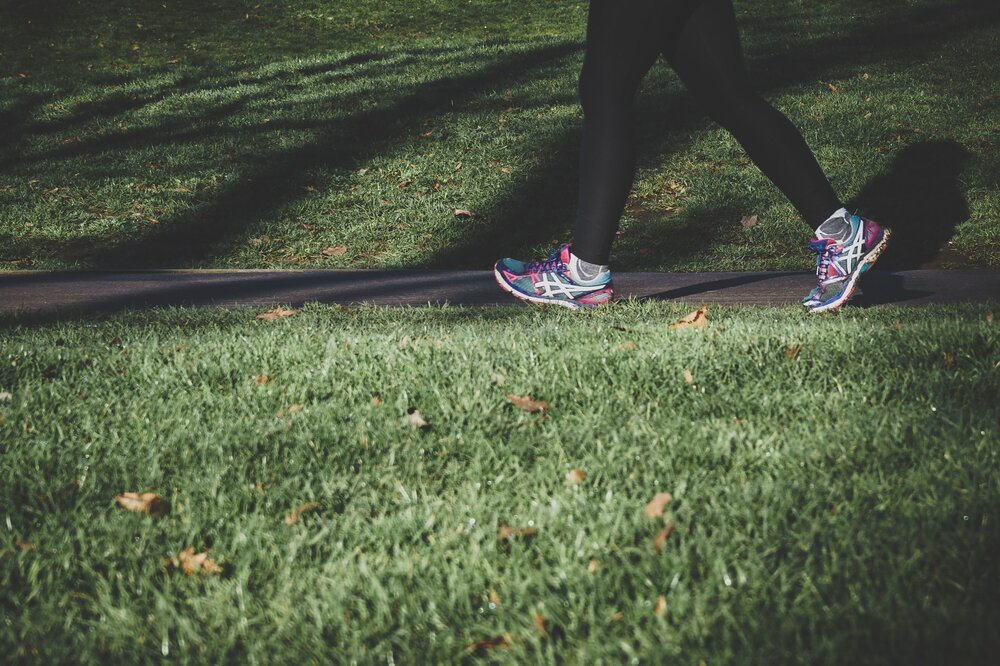How Do We Address Exercise Intolerance after a Concussion?
Can “Exercise be Medicine” After a Concussion?
A concussion is a traumatic brain injury having widespread cognitive, emotional, and physical effects. One effect of a concussion is exercise intolerance, which is the inability to exercise to the level predicted for one’s age and fitness. Typically, concussed patients stop exercise because of symptom exacerbation.
The concept of “rest is best” was previously supported by evidence of a vulnerable period early after a concussion, during which the brain is susceptible to repeat injury, worsening of symptoms with cognitive or physical stress, or prolonged recovery with excessive activity soon after a concussion. However, recent evidence shows that moderate levels of physical activity within the first week after injury reduces the incidence of persistent post-concussive symptoms (PPCS) compared to those who don’t participate in any structured physical activity.
The principle of “exercise is medicine” is that the healthcare system should consider exercise as a form of medication or treatment that should be prescribed to patients. However, as with medication, it is essential that exercise be prescribed based on a ‘dosage’ that suits the characteristics and needs of the concussed individual.
The Physiology of a Concussion and Its Effect on Exercise
The metabolic and physiological changes of a concussion result in altered function of the autonomic nervous system (ANS) and control of cerebral blood flow (CBF). The primary ANS control center in the brainstem may be damaged in concussion, particularly if there was a rotational force applied to the upper cervical spine. Altered autonomic regulation after a concussion is believed to be due to changes in the autonomic centers in the brain and/or uncoupling of the connections between the central ANS, the arterial baroreceptors, and the heart.
Of relevance to concussion, the ANS controls the CBF response to exercise. The following occurs in those with PPCS:
They have abnormally low sensitivity to the arterial CO2 tension (PaCO2)
Causes relative hypoventilation during exercise
Raises PaCO2 levels out of proportion to exercise intensity
CBF is directly proportional to PaCO2; hence, elevated PaCO2 raises CBF disproportionately to exercise intensity
Contributes to symptoms of headache and dizziness that significantly reduce exercise tolerance
Sub-threshold aerobic exercise treatment increases CO2 sensitivity to normal, which normalizes PaCO2, exercise ventilation, CBF, and exercise tolerance. CO2 sensors are located in the brainstem, near the autonomic control centers for cardiopulmonary function. Thus, sub-threshold aerobic exercise improves the central physiology of the concussed brain and reduces symptoms in those with PPCS.
The Benefits of Aerobic Exercise After Concussion
Motivation for exercise after brain injury is important. If forced to exercise after a concussion, the corticotrophic axis can be stimulated, increasing stress hormone levels and halting the release of brain-derived neurotrophic factor (BDNF). Whereas if exercise is voluntary, BDNF is increased and exercise can be beneficial to recovery.
There are extensive data to suggest that exercise, specifically aerobic exercise, attenuates cognitive impairment and reduces dementia risk in humans. Changes in the brain can be seen as early as 5-6 weeks after starting an aerobic training program. Proposed mechanisms include:
Promoting neuroplasticity by increasing BDNF for neuron growth and repair
Increasing proliferation of neuronal stem cells
Reducing neuronal degeneration and apoptotic cell death around the damaged area
Increasing Purkinje neurons and suppressing the formation of reactive astrocytes
Increasing hippocampal volume to improve spatial memory
Mitigating vascular disease risk
Improving cognitive performance by reducing DNA fragmentation in the hippocampus
The Buffalo Concussion Treadmill Test: Assessment for Exercise Intolerance
Dr. John J. Leddy, director of the University at Buffalo’s Concussion Management Clinic, conducts a BCTT
The Buffalo Concussion Treadmill Test (BCTT) is the gold-standard for assessment of exercise intolerance. It is a systematic and reliable method to determine the symptom-exacerbation exercise threshold in concussed patients. The results are used to prescribe an individualized, progressive sub-symptom threshold aerobic exercise program that safely improves symptoms and helps restore function.
The patient walks on a level treadmill at a certain speed. The incline is gradually increased and then the speed can be increased if the patient passes a certain point of the test. Parameters including heart rate (HR), symptom severity, and Borg Rating of Perceived Exertion are recorded until symptom exacerbation or voluntary exhaustion occurs. Since the treadmill is not appropriate for all patients, there is also the Buffalo Concussion Bike Test (BCBT). The BCTT or BCBT can be repeated every 2-3 weeks to establish a new symptom-limited threshold HR for exercise.
Exercise testing on the treadmill should only be considered for those patients without orthopedic or vestibular problems that increase the risk of falling and general exercise testing should only be considered in those patients who are at low risk for cardiac disease.
Prescription of an Aerobic Exercise Program Based on the BCTT
After establishing the sub-maximal symptom exacerbation threshold, the patient is prescribed exercise (on either a stationary cycle or treadmill) for:
20 minutes a day,
at an intensity of 80-90% of the threshold HR achieved on the exercise test,
once per day,
for 6 to 7 days per week using a HR monitor.
These parameters are based on the amount of weekly exercise needed to achieve a cardiovascular training effect and modify cardiac autonomic function.
A sub-threshold heart rate can also be determined if the patient is unable to undergo a BCTT by starting at 50% of their maximum HR (maximum HR = 220 - age, i.e. 220 - 30 years = 190 bpm; therefore, 50% of 190 bpm is 95 bpm). The most important guide is the patient’s symptoms and to ensure that they stay below their symptom exacerbation threshold.
Using a heart rate monitor is helpful, as after a brain injury, there is a poor heart rate response to physical activity and symptoms often do not correlate with the expected increase in heart rate. Thus, objective monitoring of heart rate using a heart rate monitor during physical activity is beneficial to promote recovery and safe participation in physical activity.
The rate of improvement and progression in exercise intensity varies among concussed individuals. The purpose is to provide specific goals to achieve without focusing on speed to recovery. Physiological recovery is defined as the ability to exercise to voluntary exhaustion at ≥80% of age-predicted maximum HR for 20 minutes several days in a row without symptom exacerbation.
Until recently, recommendations for concussion have been rest and avoidance of activity. However, prolonged rest can exacerbate symptoms and delay recovery, as physical deconditioning can impair autonomic control of CBF. Individualized sub-threshold exercise treatment is safe, non-pharmacological, and well accepted.
Improvements on the BCTT
Performance on the BCTT or BCBT indicates whether exercise intolerance after concussion is associated with abnormal autonomic function, while restoration of exercise tolerance indicates normalization of these fundamental physiological mechanisms. The ability to exercise to exhaustion on a treadmill test without symptom exacerbation is one definition of physiological recovery from concussion, which translates to recovery and readiness to return to activity.
Restoration of aerobic exercise tolerance, however, may not coincide with recovery of full neurological function after concussion. Data obtained from the BCTT can help clinicians make a return-to-activity decision more objective and physiologically-based, but there are other factors that are equally important to determine readiness to return to activity.
Use of The BCTT to Diagnose Other Causes of PPCS
The BCTT or BCBT is used to determine whether PPCS patients have recovered from exercise intolerance due to autonomic and physiological disturbance.
However, as there is more than one cause of PPCS, the patient’s performance and symptom pattern during the BCTT or BCBT, combined with a comprehensive physical examination, can help with a differential diagnosis of PPCS.
PPCS patients who exercise to exhaustion without exacerbation of headache or other symptoms no longer have physiological concussion; rather, they have a different cause(s) of their symptoms. Most commonly, other potential causes can include:
post-traumatic headache syndrome,
or a combination.
A careful physical examination of the cervical spine and a neurologic examination focusing on the vestibular system and oculomotor responses can help identify sources of symptoms such as dizziness, headache, trouble concentrating and blurred vision.
Exercise itself can induce symptoms of fatigue, headache and dizziness near voluntary exhaustion, whereas concussed patients are limited by symptoms early (typically at 50-70% of age-predicted HR maximum). The key differentiating point is that those with cervicogenic headache or cervicogenic dizziness are able to exercise near to exhaustion, despite symptoms, whereas concussed patients stop early at a submaximal level because of significant symptom exacerbation. Some patients with severe (usually peripheral) vestibular dysfunction may also stop exercise tests early when it is very clear that the vestibular dysfunction is the cause.
If the patient’s PPCS is no longer due to a physiological concussion, they may benefit from aerobic therapy combined with additional targeted interventions (i.e. manual therapy, vestibular rehabilitation, rehabilitation exercises) tailored to the causes of other specific post-traumatic issues. Thus, the BCTT or BCBT, combined with a complete physical examination, can help the practitioner narrow the differential diagnosis of PPCS and direct therapy to the specific cause, enhancing the return-to-activity process.
Make sure that the Buffalo Concussion Treadmill or Bike Test is a component of your multi-modal post-concussion assessment!
Sources:
Baker, J. G., Freitas, M. S., Leddy, J. J., Kozlowski, K. F., & Willer, B. S. (2012). Return to full functioning after graded exercise assessment and progressive exercise treatment of postconcussion syndrome. Rehabilitation Research and Practice, 2012, 1–7. https://doi.org/10.1155/2012/705309
Clausen, M., Pendergast, D. R., Willer, B., & Leddy, J. (2016). Cerebral blood flow during treadmill exercise is a marker of physiological postconcussion syndrome in female athletes. Journal of Head Trauma Rehabilitation, 31(3), 215–224. https://doi.org/10.1097/htr.0000000000000145
Leddy, J. J., & Willer, B. (2013). Use of graded exercise testing in concussion and return-to-activity management. Current Sports Medicine Reports, 12(6), 370–376. https://doi.org/10.1249/jsr.0000000000000008
Leddy, J. J., Baker, J. G., Kozlowski, K., Bisson, L., & Willer, B. (2011). Reliability of a graded exercise test for assessing recovery from concussion. Clinical Journal of Sport Medicine, 21(2), 89–94. https://doi.org/10.1097/jsm.0b013e3181fdc721
Leddy, J. J., Haider, M. N., Ellis, M., & Willer, B. S. (2018). Exercise is medicine for concussion. Current Sports Medicine Reports, 17(8), 262–270. https://doi.org/10.1249/jsr.0000000000000505
Leddy, J. J., Kozlowski, K., Fung, M., Pendergast, D. R., & Willer, B. (2007). Regulatory and autoregulatory physiological dysfunction as a primary characteristic of post concussion syndrome: Implications for treatment. NeuroRehabilitation, 22(3), 199–205. https://doi.org/10.3233/nre-2007-22306
Lojovich, J. M. (2010). The relationship between aerobic exercise and cognition. Journal of Head Trauma Rehabilitation, 25(3), 184–192. https://doi.org/10.1097/htr.0b013e3181dc78cd







